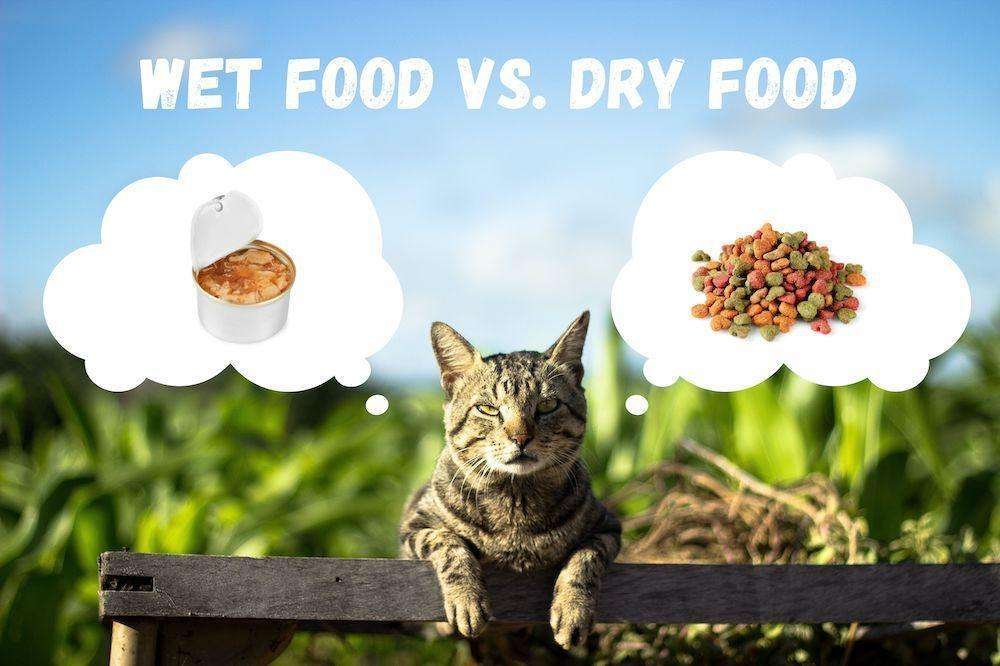When it comes to nourishing your beloved feline, the choice between wet and dry cat food often sparks a debate among pet owners. Akin to human food preferences, cats too have their inclinations, and understanding the advantages and drawbacks of each option is vital for their overall well-being.

Nutritional Content Comparison
Wet Food: Containing a higher moisture content, wet cat food appeals to cats with its rich aromas and flavours, resembling a hearty stew that keeps them satisfied. This variety often boasts a higher protein content, making it a go-to option for pet owners prioritizing their cat’s protein intake.
Dry Food: Convenient and with a longer shelf life, dry cat food is akin to an easy-to-store snack that can be tailored to meet specific dietary requirements. Additionally, the crunchy texture of dry kibble can aid in maintaining dental health, functioning as a form of preventive dental care.

Hydration and Urinary Health Considerations
Ensuring proper hydration is crucial for feline urinary health. Cats, known for their low thirst drive, may benefit from the additional moisture provided by wet food, preventing potential urinary issues. Imagine the wet food as a source of hydration akin to a refreshing soup with every meal.
On the other hand, the abrasive action of chewing dry food helps in keeping the teeth clean, yet it might not provide sufficient hydration to prevent urinary complications. Think of it as enjoying a crunchy treat that lacks the refreshment of a hydrating beverage.
Dental Health and Texture Analysis
While wet food might not contribute to dental health as effectively due to its softer texture, it can still be a delectable choice for cats that prefer a more tender meal. On the contrary, the crunchiness of dry food can aid in reducing plaque and tartar build-up, serving as a substitute for regular dental care.

Individual Preferences and Consultation
Understanding that every cat is unique, with its individual tastes and requirements, it is essential to consult a veterinarian to determine the most suitable diet plan. Factors such as age, health conditions, and personal preferences play a pivotal role in the decision-making process. Striking the right balance between wet and dry food can ensure your cat receives the optimal nutrition and care needed for a healthy and fulfilling life.
